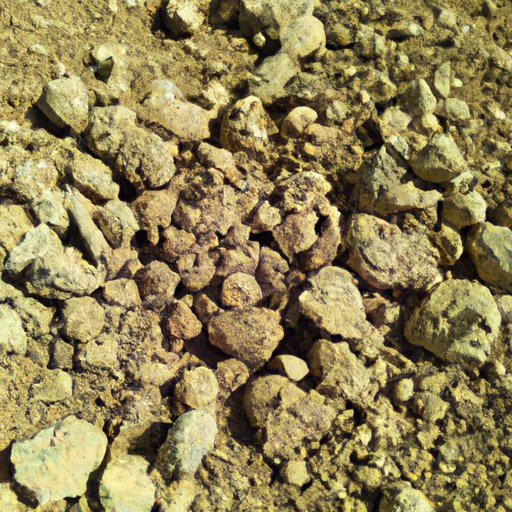
Introduction
Soil acidity is a critical factor in the health and vitality of plants. It is important for gardeners to have a basic understanding of soil acidity levels and how to manage them. In this article, we will explore how to make soil acidic and help gardeners understand why they may need to do so.
Factors that Contribute to Low Soil Acidity
Rainfall patterns, soil composition, and vegetation type all play a role in the pH level of soil. High rainfall areas tend to have more acidic soil, while areas with low rainfall tend to have more basic soil. Additionally, soils that are low in organic matter tend to be more acidic than those with a higher organic content. Vegetation also plays a role in soil acidity. Plants that prefer acidic soil, such as blueberries and azaleas, can contribute to the acidification of soil as they generate organic acid through their root systems.
Testing Soil Acidity
There are several ways to test soil acidity, including using a pH meter, litmus paper, or a soil testing kit. Once the test has been completed, it is important to interpret the results correctly. A pH of 7 is neutral, while a pH below 7 indicates acidity and a pH above 7 indicates alkalinity. In most cases, plants prefer a pH range between 6.0 and 7.0. However, some plants prefer more acidic soil with a pH below 6.0.
Common Amendments to Make Soil More Acidic
There are several common amendments that can be used to make soil more acidic, including sulfur, peat moss, and pine needles. Sulfur is a common amendment used to lower soil pH. It is available in different forms, including elemental sulfur and sulfate salts. Peat moss is another material that can be used to lower soil pH. It is readily available and easy to work into the soil. Pine needles are also an excellent option for lowering soil pH, and they can be easily sourced from conifer trees.
Each amendment has its pros and cons. Sulfur can be effective but can take a long time to work its way into the soil. Peat moss is easy to work with and readily available but can be expensive. Pine needles are cheap and easy to source but may require a lot of material to achieve the desired effect.
Step-by-Step Process for Amending Garden Soil
The process of amending soil to make it more acidic involves calculating the correct amount of amendment to achieve the desired pH level, mixing the amendment into the soil, and waiting for the soil to adjust. Calculation of the correct amount of amendment requires the knowledge of the current pH level and the desired pH level. Over-application of amendments can be just as harmful as not applying enough, so it is important to be precise.
Once the calculation is complete, the amendment can be mixed into the soil manually or with the use of a rototiller. It is recommended to mix the amendment to a depth of at least 6 inches for best results. After the amendment has been mixed, the soil must be watered to allow the amendment to settle and take effect. The results of the amendment process may take some time to become apparent and may require multiple applications to achieve the desired level of acidity.
Planting and Caring for Acid-Loving Plants
Varieties of plants prefer acidic soil, including blueberries, azaleas, rhododendrons, and camellias. It is important to research the specific plants to ensure that they will thrive in the desired soil pH. Once planted, it is important to ensure the plants are properly cared for to optimize growth and health. Watering and fertilizing should be done with attention to the plants’ specific needs, and regular pH level testing should be performed to ensure the soil remains at the desired pH range.
Potential Risks Associated with Making Soil More Acidic
Amending soil to make more acidic can also cause some potential risks such as leaching of nutrients from the soil. The availability of soil nutrients to plants is influenced by the pH level of the soil. High soil acidity can cause aluminum and manganese toxicity which can impair root growth and plant health. Another risk of make soil more acidic is possible imbalanced pH levels. Therefore, it is important to monitor the pH levels regularly and seek expert opinions if an imbalance is detected.
Conclusion
Soil acidity is a crucial factor in the health and vitality of plants. Gardeners should be familiar with the factors that contribute to soil acidity and testing procedures. Regular monitoring is important to ensure soil remains within the desired pH range for specific plant species. Although there are some potential risks associated with making soil more acidic, the proper application of amendments and follow-up care can result in a more productive and healthy garden. We hope this guide has been helpful in teaching gardeners how to make soil more acidic and why it is important.




